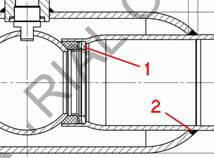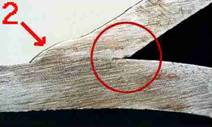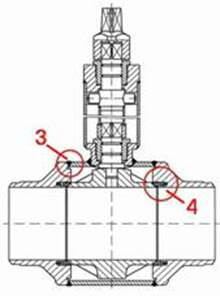Böhmer cranes are made of forged parts! This is due to their unsurpassed quality.
We ask customers to specify at the producers offering shut-off valves-by what method the offered cranes are made.
Often the price reflects the method of production and the materials used.
The main gradations of ball valves
The structure of the body:
- Collapsible
- All-welded
According to the method of production:
1. Cold stamping (the most simple method of production)
Cold stamping of metals is a type of metal processing under pressure, during which the necessary products of specified shapes and sizes are obtained by plastic deformation of metals.
Accordingly, in this case, the body and the ball of the crane are made of steel pipe segments, by deformation and pulling.
The main weak points of cranes produced by stamping:
1.1. A deformed pipe is always less resistant to loads than a non-deformed pipe. Accordingly, the use of such valves is contrary to the technical policy of many customers: “Increased resistance to maximum loads and bending moment compared to the pipeline.”
1.2. The second and fundamental weakness of forged valves is a welding place the middle part of the valve body to the side nozzles. It looks like this (figure 2):

Welding is carried out at an angle. This method of welding does not meet more than one rule. As a result: non-welded weld.

In the cranes made of cast and forged blanks welding of blanks between themselves occurs on straight sections with full weld failure (figure 3):

Also due to lack of space, most manufacturers of ball valves use disc springs (Fig.1 digit 1), instead of cylindrical (Fig.3 figure 4), which also reduces the service life of seals under constant influence of the environment.
2. Casting
The molten liquid metal is poured into special molds, after cooling the metal and the connector (or destruction) of the molds, a workpiece (casting) of a given configuration and dimensions is obtained. The main drawback of this method of production of the components of the crane body is that inside the metal usually formed voids (shells), which lead to the formation of so-called “point” corrosion. Further, to obtain an all-welded body of the workpiece (casting) are welded together.
3. Forging (the most expensive and time-consuming method of production of cranes)
The heated metal (blank) is treated with a blow or pressure, using hammers and forging machines. If the heated metal is treated without special forms (dies), the process is called free forging, if the dies — hot stamping. Thus, the absence of voids and shells inside the metal blanks is achieved.
Further, as in the previous case, to obtain an all-welded body of the workpiece are welded together.

